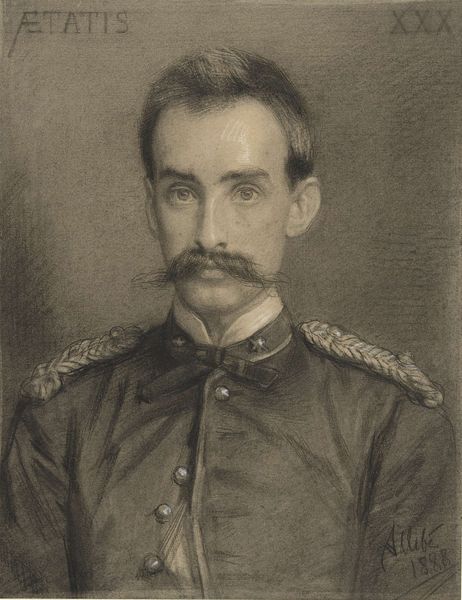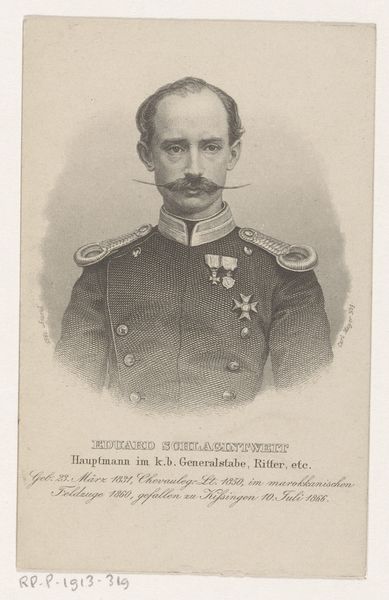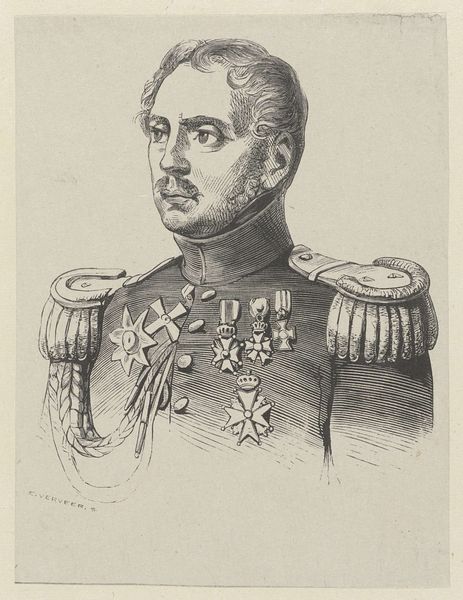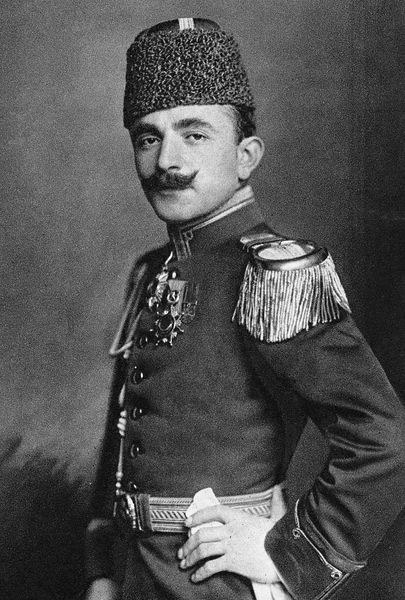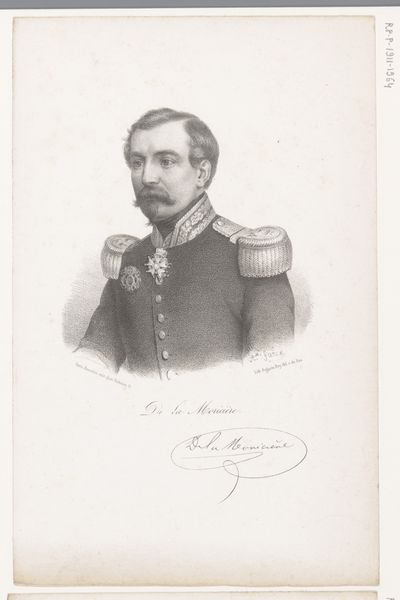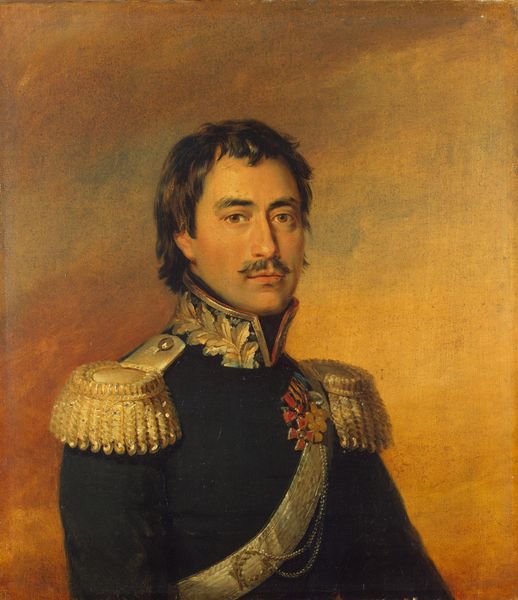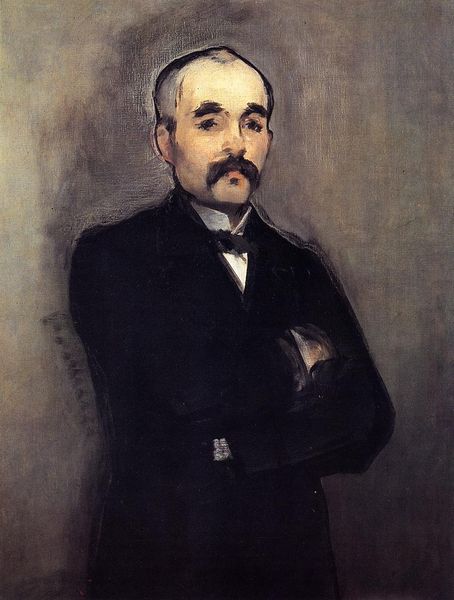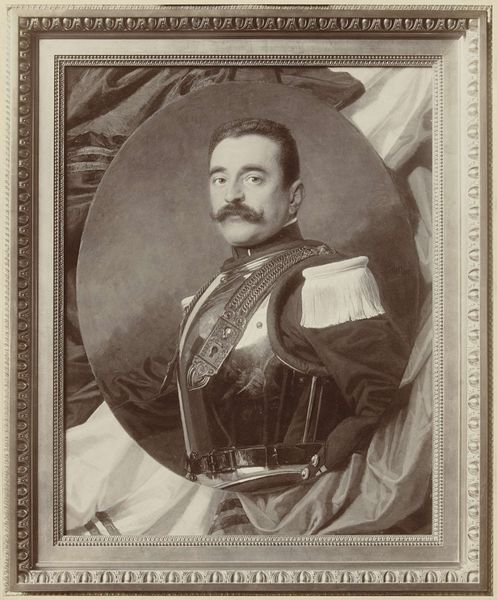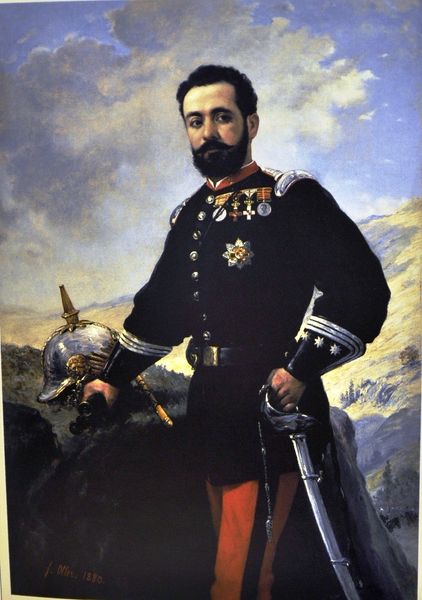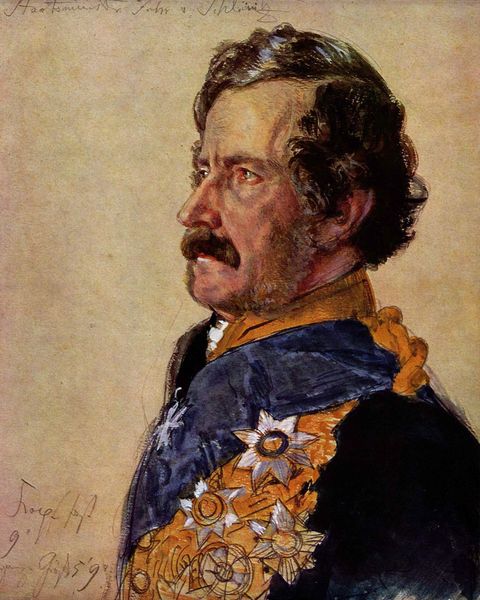
Copyright: Public domain
Curator: Ilya Repin's 1888 "Portrait of A.V. Zhirkevich" presents us with a somber-looking gentleman in uniform, rendered in charcoal. Editor: It strikes me immediately as a study in contrasts. The sharp, almost brittle quality of the charcoal gives the sitter a vulnerable air, despite his official military attire. Curator: Absolutely. Consider the cultural context; military rank conferred status and authority. Repin utilizes visual symbols such as the crisp lines of the uniform, shoulder boards and meticulously rendered facial hair to communicate authority, while the medium softens that potential rigidity. Editor: And let’s not overlook the choice of charcoal itself. It's a humble material, easily erased, easily smudged. It allowed Repin to work quickly, economically and potentially to make alterations, it implies a degree of impermanence, doesn't it? What does that say about power itself? Curator: That's astute. Charcoal’s inherent ephemerality could also speak to the fleeting nature of worldly power. Look at the slightly mournful expression on Zhirkevich's face. The dark circles under his eyes perhaps hint at the psychological weight carried by a man in his position. Editor: Exactly, it is a drawing. Not the painting with richer material symbolism such as oil and gilded frames that he could have commissioned instead. Its social function is clear - it acts as both commodity and image for Repin to represent and for Zhirkevich to participate in defining his identity. Curator: Repin’s portraits often delve beyond surface appearances. He possessed a remarkable ability to capture the inner lives of his subjects. In Russian realism, the goal wasn’t mere likeness but truth. Editor: True, yet even the realist mode has a kind of constructed fiction within its conventions, hasn't it? Perhaps we find a sort of material realism reflected back, where status and rank rub against material fact: fleeting black dust upon paper, soon to fade, even if we frame and hang it. Curator: Indeed. Repin compels us to consider the psychological and material tension within this seemingly straightforward portrait. Editor: A thought-provoking encounter, bringing art’s material history to life.
Comments
No comments
Be the first to comment and join the conversation on the ultimate creative platform.
